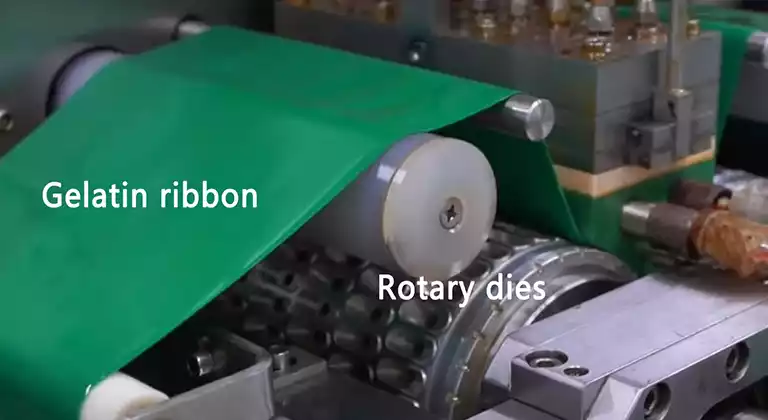Soft gelatin capsule (single-piece capsule)💊
In 1834, Mothes, a French pharmacist, patented the manufacture of single-piece gelatin capsules. Leather bags filled with mercury were dipped into a gelatin solution to create these capsules. It not only masked bitterness and unpleasant odor of drug, but also protected it from light, oxygen and dampness. In 1875 glycerin was mixed with gelatin to make capsules soft and flexible, which overcame the disadvantage of becoming hard and brittle when they were dried.

The process that brought soft capsules into the modern era was the rotary-die process devised by Robert P. Scherer. The gelatin solution was first made into two soft thin ribbons which were then fed into a filling machine by two counter rotating moulds. When two ribbons were affixed together, the liquid formulation was injected into them from the nozzle. Under the pressure of filler, gelatin takes up the entire cavity on the rotary moulds. As the machine rotates, the other side of capsule was sealed to form an oval shaped capsule.
Hard gelatin capsules (two-piece capsule)💊
Ten years after Moths patented his soft capsule process, Frenchmen Lehuby filed his own patent for a two-piece capsule: rows of metal pins mounted on a wooden disk were immersed in gelatin solution; when they were pulled out from solution, the gelatin gelled on the pins to form capsule shell. Although this principle of producing two capsules was still used today, technical limitations made it difficult to put them together at that time. Two-piece capsules were not commercially produced until 1876, when F.A. Hubel, an American pharmacist, designed a standardized metal mold. He categorized them by size from number 000 to 5. The 000 is largest and 5 is smallest.

In 20th century, the capsules production gradually changed from manual to automated. A semi-automatic machine could produce about 10,000 capsules per day in 1900s. The first fully automatic machine made by Arthur Colton increased output to 8,000 capsules per hour per machine. At the same time, air conditioning was installed in capsule plant. Even on hot summer days, the temperature in factory would be lower than gelatin melting point, so the downtime caused by the failure gelation had been avoided. In 1931, Arthur Colton designed another fully automatic machine which consisted of two mirrored parts that could produce capsule cap and body at the same time. All the modern hard capsule machines were improved from it.
The smooth capsule wall was rarely changed until the advent of high-speed automatic filling machines in 1960s. The hard capsules were easily broken or reopened after filling. This was caused by a large amount of air being sealed into the capsule during the high-speed filling process. This forced capsules to be changed to accommodate modern production. The modern capsule has grooves in its cap and body to make it more securely joined. An air valve on the capsule shell allows air to escape to reduce its internal pressure. Several pre-locks on the cap allow the temporary closure of capsule before filling, and they can be easily reopened during filling.